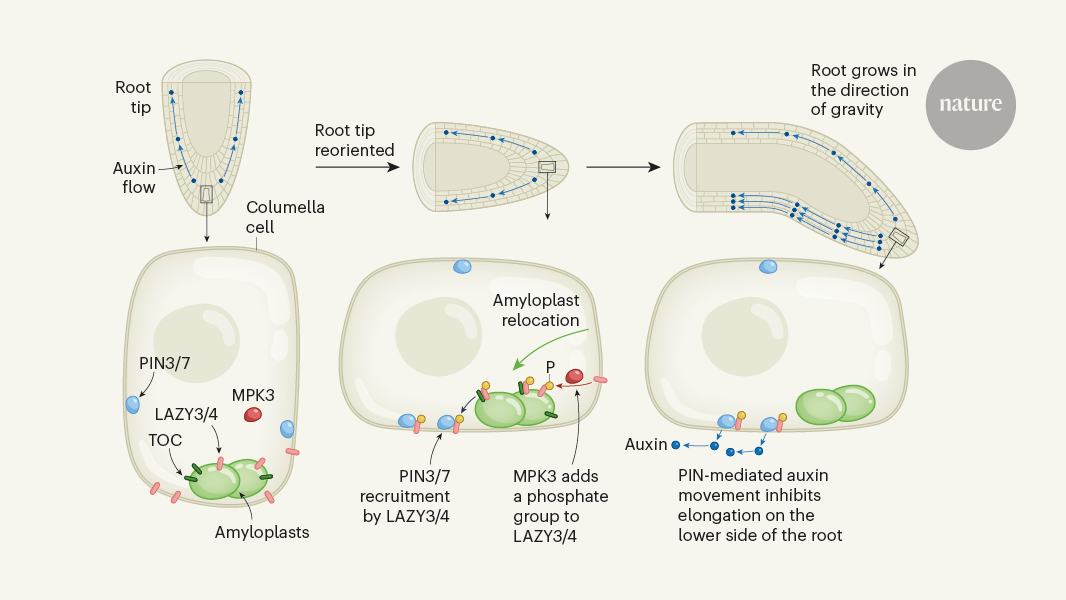Gravity Sensing and Response Mechanisms in Plants: Insights into Growth and Evolution
This article summarizes two recent studies that provide insights into how plants sense and respond to gravity, a crucial aspect of their growth and evolution.
The first study by Nishimura et al. in Science explores the factors that determine the growth of plant shoots and roots. They found that plants use specialized organelles called statoliths to sense gravity and adjust their growth accordingly. The statoliths, which are dense starch-filled structures, move in response to gravity and trigger signaling pathways that regulate the direction of growth.
The second study by Chen et al. in Cell investigates the molecular mechanisms underlying gravity perception and response in plants. They identified a key protein, LAZY1, that acts as a gravity sensor and coordinates the plant's growth response. LAZY1 interacts with other proteins to modulate auxin, a plant hormone that plays a crucial role in directing growth.
Understanding these gravity-sensing and response mechanisms in plants can help us better comprehend plant evolution and potentially aid efforts to improve the productivity and sustainability of crops. By elucidating the intricate processes that allow plants to adapt to their environment, these studies contribute to our knowledge of plant biology and its practical applications.
تخصيص الملخص
إعادة الكتابة بالذكاء الاصطناعي
إنشاء الاستشهادات
ترجمة المصدر
إلى لغة أخرى
إنشاء خريطة ذهنية
من محتوى المصدر
زيارة المصدر
www.nature.com
Things fall into place: how plants sense and respond to gravity
الرؤى الأساسية المستخلصة من
by Suruchi Royc... في www.nature.com 07-17-2024
https://www.nature.com/articles/d41586-024-01747-5
استفسارات أعمق
